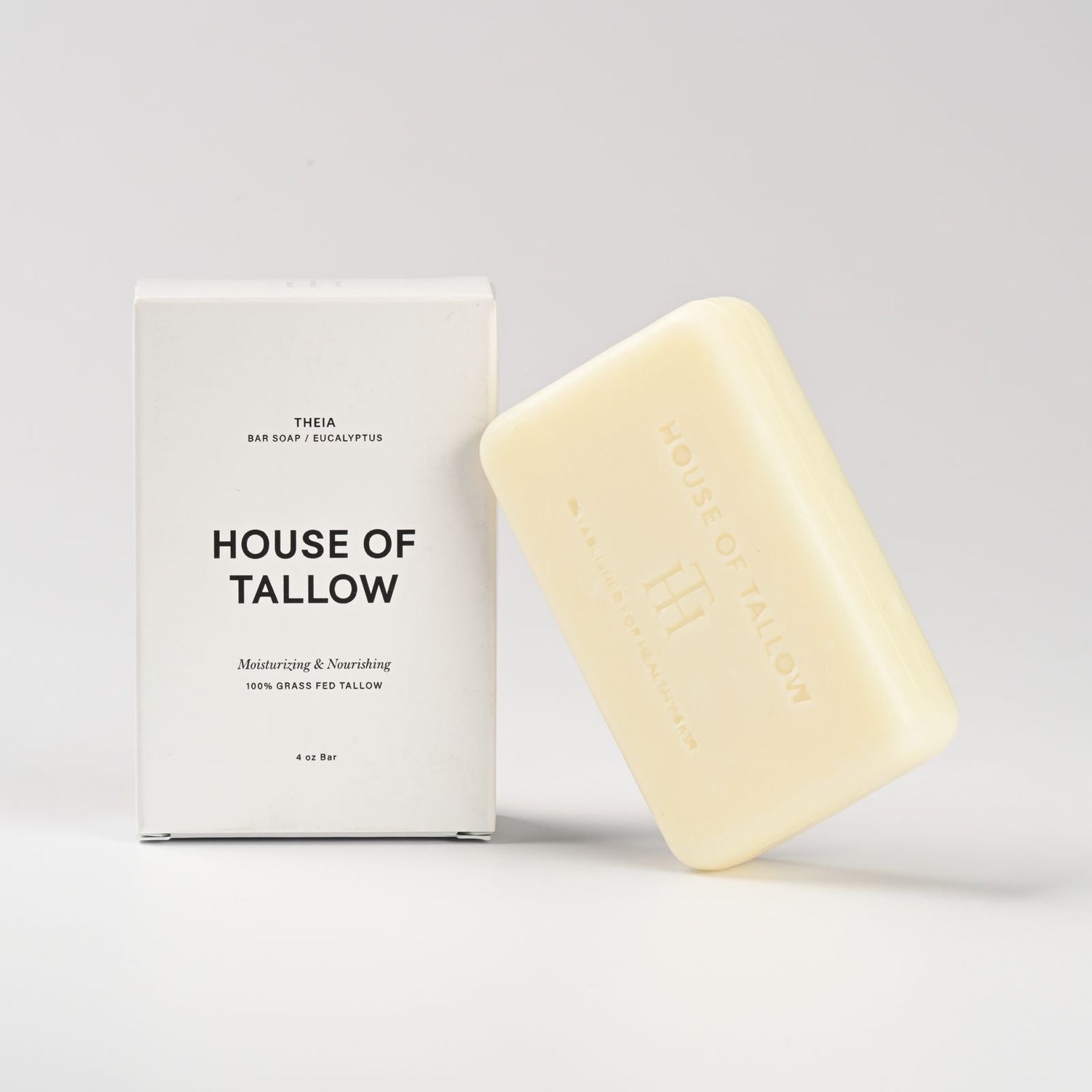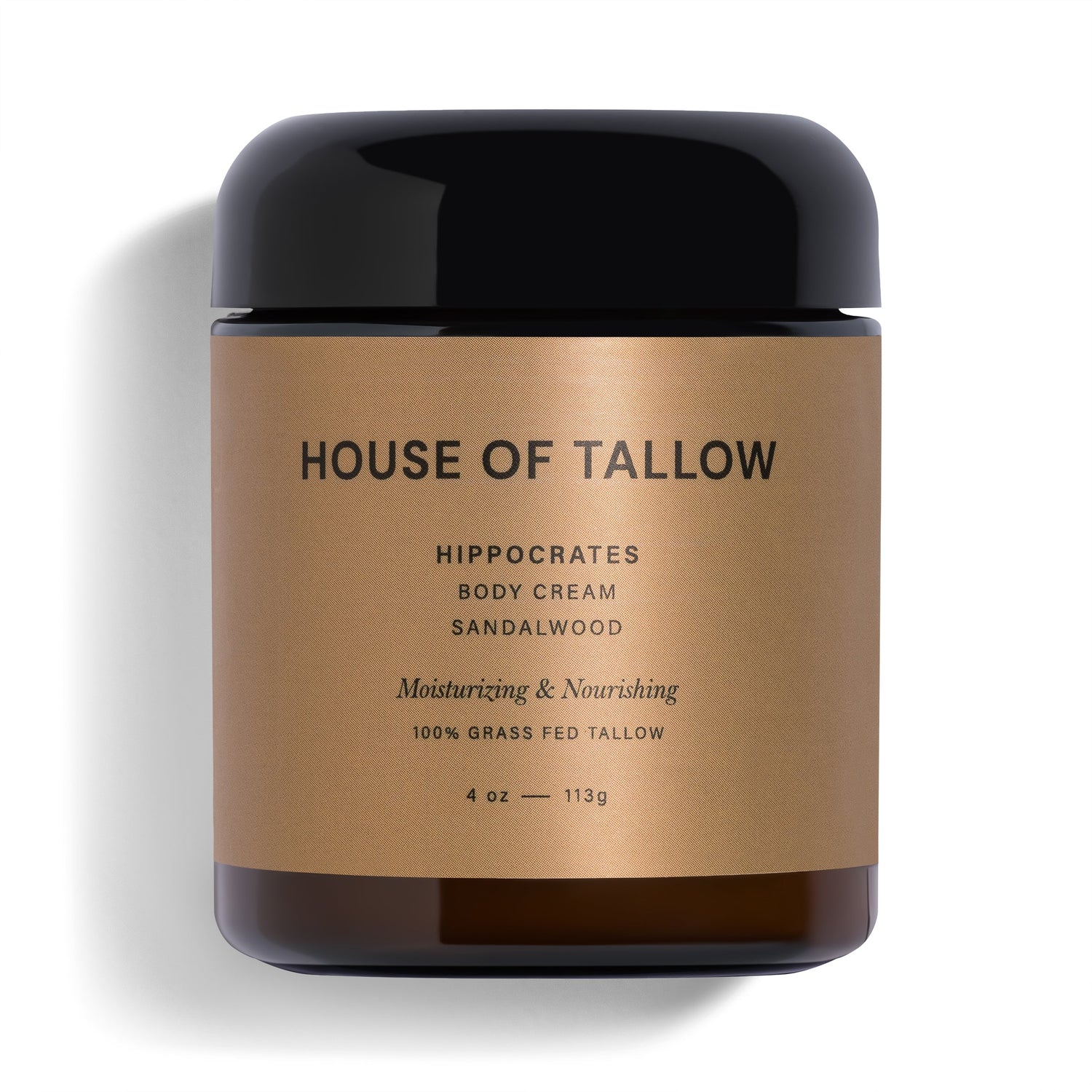Tallow is a natural fat that mimics your skin's oils, making it highly effective for stretch mark care. Packed with vitamins A, D, E, and K, along with essential fatty acids, it hydrates deeply, supports collagen production, and reduces inflammation. Users report visible improvements in stretch marks within weeks, especially with consistent application. Grass-fed tallow provides even more benefits due to higher Vitamin E content.
Key Benefits of Tallow for Stretch Marks:
- Deep Hydration: Penetrates skin for long-lasting moisture.
- Skin Repair: Vitamins and fatty acids improve elasticity and texture.
- Safe for Sensitive Skin: Low irritation risk, ideal for pregnancy and rapid body changes.
- Quick Results: Noticeable changes in redness, texture, and fading within 2–4 weeks.
Quick Comparison: Tallow vs. Standard Treatments
| Feature | Tallow | Standard Treatments |
|---|---|---|
| Absorption | Deep, mimics skin's natural oils | Often surface-level or synthetic-based |
| Irritation Risk | Low | Can cause redness with retinol-based products |
| Moisturizing | Long-lasting hydration | Requires frequent application |
| Pore Impact | Non-comedogenic | Varies, may clog pores |
To see results, apply tallow twice daily on warm, damp skin, focusing on areas prone to stretch marks. Pregnant or sensitive skin? Opt for unscented, grass-fed tallow creams for maximum benefits.
Tallow Skin Care: Benefits and Before & After Results
How Tallow Works on Stretch Marks
Tallow helps address stretch marks by mimicking the natural fats in your skin, allowing it to deeply penetrate and deliver essential nutrients where they're needed most.
Nutrients in Tallow
Tallow is packed with nutrients that play a role in improving skin elasticity and repair:
- Vitamin A supports collagen and elastin production, which are key for keeping skin strong and flexible. This may help reduce the visibility of stretch marks.
- Vitamin E, especially abundant in grass-fed tallow, acts as a powerful antioxidant that protects skin cells from damage.
- Oleic Acid provides deep hydration, improving the skin's elasticity and resilience.
Tallow vs. Standard Treatments
Here's how tallow stacks up against conventional stretch mark treatments:
| Feature | Tallow | Standard Treatments |
|---|---|---|
| Absorption | Penetrates deeply due to its molecular similarity to skin fats | Often stays on the surface or depends on synthetic carriers |
| Irritation Risk | Low, making it ideal for sensitive skin | Can cause redness or irritation, especially with retinol-based products |
| Moisturizing Effect | Offers long-lasting hydration similar to natural skin oils | Often requires frequent application |
| Pore Impact | Non-comedogenic, unlikely to clog pores | Varies; some may lead to pore congestion |
Unlike treatments with synthetic ingredients, tallow provides comprehensive skin care without harsh side effects. While hyaluronic acid products are excellent for locking in moisture, tallow goes further by delivering a full range of nutrients that support skin health.
This makes tallow especially helpful during times of rapid skin changes, like pregnancy or weight shifts. Its anti-inflammatory properties soothe irritated skin, while its deep hydration helps maintain elasticity.
Up next, check out photo results that demonstrate these effects in action.
Photo Results
Many users have shared how regular tallow application has helped improve their stretch marks. Its nutrient-packed formula seems to play a key role in skin recovery.
Customer Results
"Within weeks my skin was completely transformed! Even my husband is shocked! I have never felt more comfortable leaving the house without makeup before. I still have more healing as far as hyperpigmentation goes but I will never stop buying this."
In one case study, applying tallow twice daily to one side of the stomach improved skin texture and reduced stretch marks within 2–3 weeks . This quick progress reflects tallow's ability to deeply hydrate and calm the skin.
Another user shared that deep red and purple stretch marks, which hadn't responded to other treatments, began to fade noticeably in less than two weeks of consistent use .
What to Expect
Here’s a timeline of what users can typically expect based on stretch mark type and duration of use:
| Timeline | Stretch Mark Type | Expected Results |
|---|---|---|
| 1-2 weeks | Fresh marks (red/purple) | Initial reduction in redness and swelling |
| 2-4 weeks | Recent stretch marks (<6 months) | Improved texture and fading color |
| 4-8 weeks | Mature white marks | Gradual improvement in skin texture |
| 8+ weeks | Deep-set marks | Continued progress with regular use |
Several factors can influence how quickly results appear:
- Skin Type: People with more elastic skin may see faster changes.
- Mark Age: Newer stretch marks (red or purple) often respond quicker.
- Application: Using tallow twice daily on warm, damp skin improves absorption .
- Product Quality: Grass-fed tallow provides up to 4x more Vitamin E than standard options .
Tallow’s natural anti-inflammatory properties help soothe irritated skin and reduce redness, supporting the healing process . While many users notice early improvements within weeks, results depend on consistency and individual skin characteristics.
sbb-itb-a1b9fc0
Customer Reviews
These testimonials highlight how tallow has been used by customers to address stretch marks, with many sharing positive outcomes.
Pregnancy Results
Expectant mothers have shared their success stories, noting tallow's benefits in both preventing and reducing stretch marks. One standout product, House of Tallow's Unscented Tallow Baby Cream, holds a 4.6/5 rating from verified buyers and has become a favorite among pregnant women .
Helene, a satisfied customer, expressed her thoughts:
"I've totally fallen in love with this beef tallow cream during my pregnancy! It's super rich and creamy, soaking right into my skin without that sticky feeling. It's all-natural, which I love, and it actually helps with stretch marks. Plus, it feels so soothing on my skin. Highly recommend to any mama-to-be looking for a natural, effective belly cream!"
Another user, Lilyan Porras, started using tallow early in her pregnancy and shared her experience:
"I decided to try beef tallow in the 3rd month of my pregnancy and it has worked wonders for me, no stretch marks so far! I also have rosacea and it's helped my skin feel way better than using other products."
The positive feedback isn't limited to pregnancy; individuals dealing with stretch marks from weight changes have also reported noticeable results.
Weight Change Results
Those addressing stretch marks caused by weight fluctuations have seen improvements with consistent use of tallow. Many users have observed changes in as little as two to three weeks, attributing the progress to tallow's moisturizing properties.
Customer ratings further back up these claims, reflecting high satisfaction with tallow-based products:
| Product | Rating | Review Count |
|---|---|---|
| Theia (Eucalyptus) Tallow Body Cream | 5.0/5.0 | 4 reviews |
| Tallow Baby Cream (Unscented) | 4.6/5.0 | 5 reviews |
| Gaia (Unscented) Tallow Body Cream | 4.0/5.0 | 8 reviews |
| Hearth and Homestead Whipped Tallow Balm | 4.8/5.0 | 5,768 reviews |
Usage Guide
How to Apply
For the best results, apply tallow to warm, slightly damp skin. The ideal time is right after a shower or bath when your pores are open. Here's a simple step-by-step:
- Clean the area thoroughly.
- Gently pat your skin until it's damp but not completely dry.
- Warm a small amount of tallow between your fingers.
- Massage it into your skin using soft, circular motions until fully absorbed.
If you have sensitive skin or are pregnant, consider using an unscented tallow cream, typically priced around $29.99.
When to Apply
Consistency makes all the difference. Regular use has been shown to deliver the best outcomes .
| Time of Day | When to Apply | Why |
|---|---|---|
| Morning | After shower or bath | Helps lock in moisture all day |
| Evening | Before bed | Allows absorption during rest |
| After Activity | Post exercise or bath | Addresses immediate skin needs |
If you're pregnant, it's a good idea to start early and apply more frequently as your skin begins to stretch. Aim for twice-daily applications, especially during times of rapid body changes .
Additional Steps
You can enhance your results by incorporating a few extra techniques:
- Layering: Apply a natural belly oil first, then seal it in with tallow to retain moisture .
- Choosing the Right Product: Opt for grass-fed tallow, which contains up to four times more Vitamin E compared to conventional alternatives .
- Target Areas: Focus on commonly affected areas like the belly, breasts, hips, thighs, and lower back.
For those with sensitive skin, unscented tallow is a safer choice, making it easier to observe how your skin reacts .
Making Your Decision
Key Points
Tallow is known for its compatibility with human skin, making it a strong option for addressing stretch marks . Packed with vitamins A, D, E, and K, along with fatty acids, it supports skin repair and health.
| Benefit | How It Helps | Why It Matters |
|---|---|---|
| Biocompatibility | Matches human skin composition | Improves absorption and overall effectiveness |
| Deep Hydration | Forms a protective moisture barrier | Helps guard against skin damage during stretching |
| Collagen Support | Vitamin A encourages collagen production | Promotes skin elasticity |
| Anti-inflammatory | Contains CLA and natural compounds | Helps reduce redness and irritation |
Take these benefits into account, but keep in mind that everyone's skin reacts differently.
Medical Advice
Although tallow is generally safe and hypoallergenic , skin reactions can vary. If you're starting a new skincare routine - particularly during pregnancy - it's a good idea to consult your healthcare provider. For sensitive skin, follow these tips:
- Choose unscented products like House of Tallow's Gaia Body Cream ($29.99).
- Test on a small patch of skin before applying more broadly.
- Wait 24 hours to see how your skin responds.
- Stop using the product and consult your provider if irritation occurs.
Always prioritize your skin's unique needs and sensitivities.




